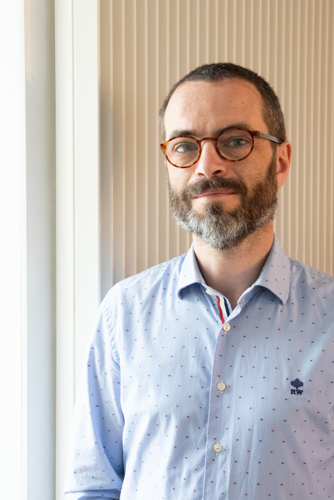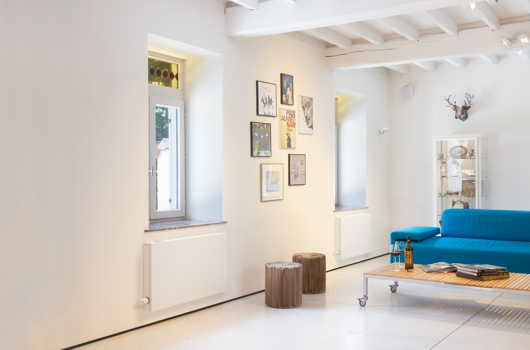How can we apply natural systems to the way we use and manufacture products?
Respecting nature means applying nature’s circular approach: The end of one product becomes the beginning of a new product. At Jaga, products are developed where the core value "respect nature" is central. Materials are reused as much as possible, energy is saved and excessive waste is avoided. For us, circular thinking is not a choice, it is in our DNA.

Mark Ruison, project manager of the R&D department, shares insights into Jaga’s commitment to sustainability:
“The use of raw materials is not unlimited. We must use it sparingly. In the Netherlands, the goal is to have a fully circular economy by 2050. In a circular economy, people, the environment and the economy are central. It's about the big picture: from raw materials extraction to production, transport, use, maintenance, waste and recyclability. At Jaga, we are continually evaluating the types of materials and processes we use to manufacture our products so we can limit the use of raw materials and improve recyclability.”
Understanding LCA
The Life Cycle Assessment (LCA) can be used to assess the impact of a product on the environment. It looks at a product from before it is manufactured through its entire lifetime—taking into account both the producer AND the end user.
The LCA score of a radiator is mostly determined by the energy consumption of the end user.
“Compared to other radiator manufacturers, Jaga scores remarkably well in the LCA measurement,” says Ruison. “This is because we take into account the raw materials, transport, production and the final product: Low-H2O radiators. Our products have a low LCA score due to both the sophisticated use of materials and the energy savings during its life phase.”
60 Years of Eco-Focused Innovation
Jaga has been producing radiators with a low water content since the 1960s. Since then, there has been a continuous innovation so that the heat exchangers and other technology are completely up-to-date with the current needs in an HVAC installation.
“Jaga’s Low-H2O convectors contain up to 90 percent less water. Because they are lighter and more compact, they also require fewer raw materials to produce them,” says Ruison. “In addition, they have a longer lifespan, come with a 30-year warranty on the heat exchanger and can be fully recycled at the end of their career. You save between 5 and 15 percent energy compared to traditional radiators.”
Recycle materials
All of Jaga’s Low-H2O convectors can be almost completely recycled at the end of their life, like the Strada.
“The Strada consists of 99% pure raw materials that can be separated from each other and reused. Only the powder-coated coating is not recyclable,” Ruison says. “We still opted for this coating, because we believe it is important for the design and reliability of the product. After all, a beautifully tailor-made product is not quickly replaced and contributes to the lifespan. The copper, aluminum, steel and brass that is used as the basis for our radiators is already largely made from recycled material.”
Packing material
Thoughtful consideration is also given to the sustainability of our packing material.
“Plastic is usually used for packaging radiators, but there are substantial limitations to recycling plastic. It is important that the radiators are well protected during transport, so we opted for thick cardboard,” says Ruison.
“We use the same packaging material to protect our products during a building’s construction. This reduces the opportunity for it to become damaged or scratched during the construction process and contributes to its durability. After use, the packaging material is completely recyclable. To prevent us from wasting too much cardboard material, a special machine has been developed in the Jaga factory that allows us to tailor the packaging precisely. That way, nothing is lost.”


